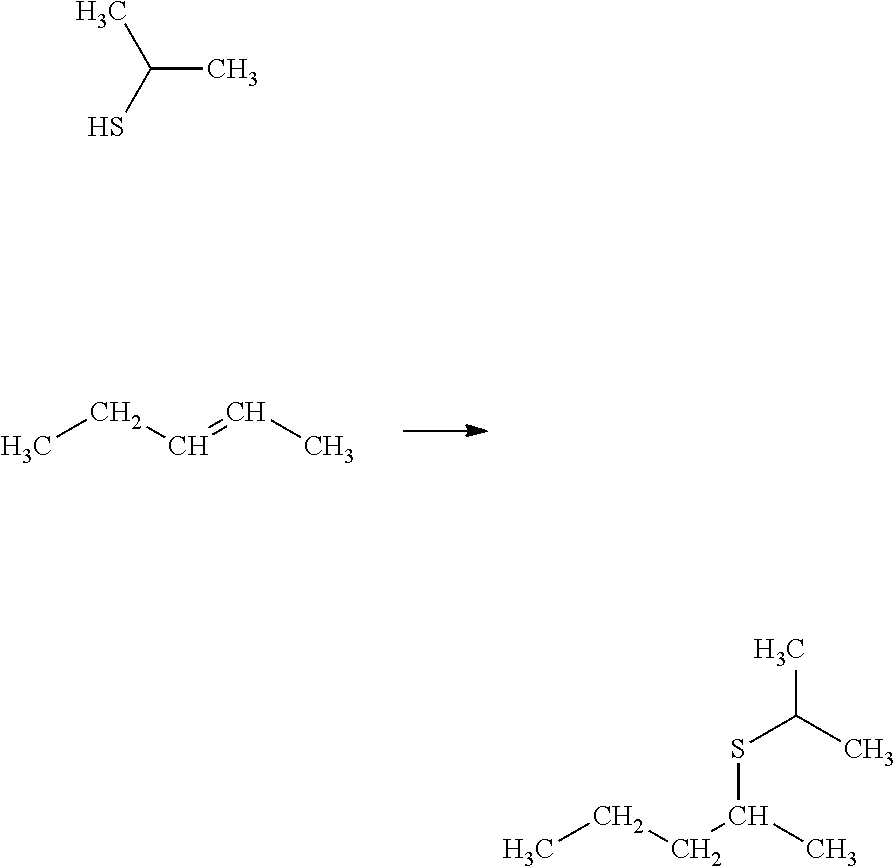Process for selectively hydrogenating a gasoline cut in the presence of a supported sulphide catalyst prepared using at least one cyclic oligosaccharide
a technology of cyclic oligosaccharide and selective hydrogenation, which is applied in the direction of organic compound/hydride/coordination complex catalyst, physical/chemical process catalyst, metal/metal-oxide/metal-hydroxide catalyst, etc., can solve the problems of limiting hydrogen consumption, limiting octane number, and loss of octane number, so as to improve the activity of conversion and improve the stability of said catalys
- Summary
- Abstract
- Description
- Claims
- Application Information
AI Technical Summary
Benefits of technology
Problems solved by technology
Method used
Image
Examples
example 2 (
Invention)
Preparation of a Supported Catalyst B (Oxide Catalyst) and a Supported Catalyst B′ (Sulphide Catalyst) with Formula NiMo / Al2O3 in the Presence of β-Cyclodextrin (Co-Impregnation)
[0079]Catalyst B was obtained by dry impregnation of an aqueous solution prepared from ammonium heptamolybdate and nickel nitrate, the volume of the solution containing the nickel and molybdenum precursors being rigorously equal to the pore volume of the alumina support mass. The concentrations of precursors in the aqueous solution were adjusted in order to deposit the desired quantities of Ni and Mo on the alumina support. Said aqueous solution also contained β-cyclodextrin (SIGMA-ALDRICH, 98% pure) in a molar ratio (Ni+Mo) / β-cyclodextrin of 30. After a 12 hour maturation step, the solid was dried for 12 hours at 120° C. then calcined in air at 500° C. for 2 hours.
[0080]Catalyst B obtained in the oxide state with formulation NiMo had a molybdenum content of 7.1 expressed as the % by weight of the ...
example 3 (
Invention)
Preparation of a Supported Catalyst C (Oxide Catalyst) and a Supported Catalyst C′ (Sulphide Catalyst) with Formula NiMo / Al2O3 in the Presence of β-Cyclodextrin (Co-Impregnation of Ni and Mo then Successive Impregnation of β-Cyclodextrin)
[0082]Catalyst C was obtained by dry impregnation of an aqueous solution prepared from ammonium heptamolybdate and nickel nitrate, the volume of the solution containing the nickel and molybdenum precursors being rigorously equal to the pore volume of the alumina support mass. The concentrations of precursors in the aqueous solution were adjusted in order to deposit the desired quantities of Ni and Mo on the alumina support. After a 12 hour maturation step, the solid was dried for 12 hours at 120° C. A second dry impregnation step meant that β-cyclodextrin (SIGMA-ALDRICH, 98% pure) dissolved in water could be added to the dry solid that had been obtained. The (Ni+Mo) / β-cyclodextrin molar ratio was 30. After a 12 hour maturation step, the so...
example 4 (
not in Accordance)
Preparation of a Supported Catalyst D (Oxide Catalyst) and a Supported Catalyst D′ (Sulphide Catalyst) with Formula NiMo / Al2O3 in the Presence of Cellobiose
[0085]Cellobiose, or β-D-glucopyrannosyl(1→4)D-glucopyrannose, is the product of cellulose degradation. It is a diholoside with empirical formula C12H22O11. It is not a cyclic oligosaccharide. The developed formula of cellobiose is given below:
[0086]Catalyst D was obtained by dry impregnation of an aqueous solution prepared from ammonium heptamolybdate and nickel nitrate, the volume of the solution containing the nickel and molybdenum precursors being rigorously equal to the pore volume of the alumina support mass. The concentrations of precursors in the aqueous solution were adjusted in order to deposit the desired quantities of Ni and Mo on the alumina support. The solution also contained cellobiose (supplied by WWR) in a (Ni+Mo) / cellobiose molar ratio of 30. After a 12 hour maturation step, the catalyst was d...
PUM
| Property | Measurement | Unit |
|---|---|---|
| temperature | aaaaa | aaaaa |
| temperature | aaaaa | aaaaa |
| boiling point | aaaaa | aaaaa |
Abstract
Description
Claims
Application Information
 Login to View More
Login to View More - R&D
- Intellectual Property
- Life Sciences
- Materials
- Tech Scout
- Unparalleled Data Quality
- Higher Quality Content
- 60% Fewer Hallucinations
Browse by: Latest US Patents, China's latest patents, Technical Efficacy Thesaurus, Application Domain, Technology Topic, Popular Technical Reports.
© 2025 PatSnap. All rights reserved.Legal|Privacy policy|Modern Slavery Act Transparency Statement|Sitemap|About US| Contact US: help@patsnap.com



